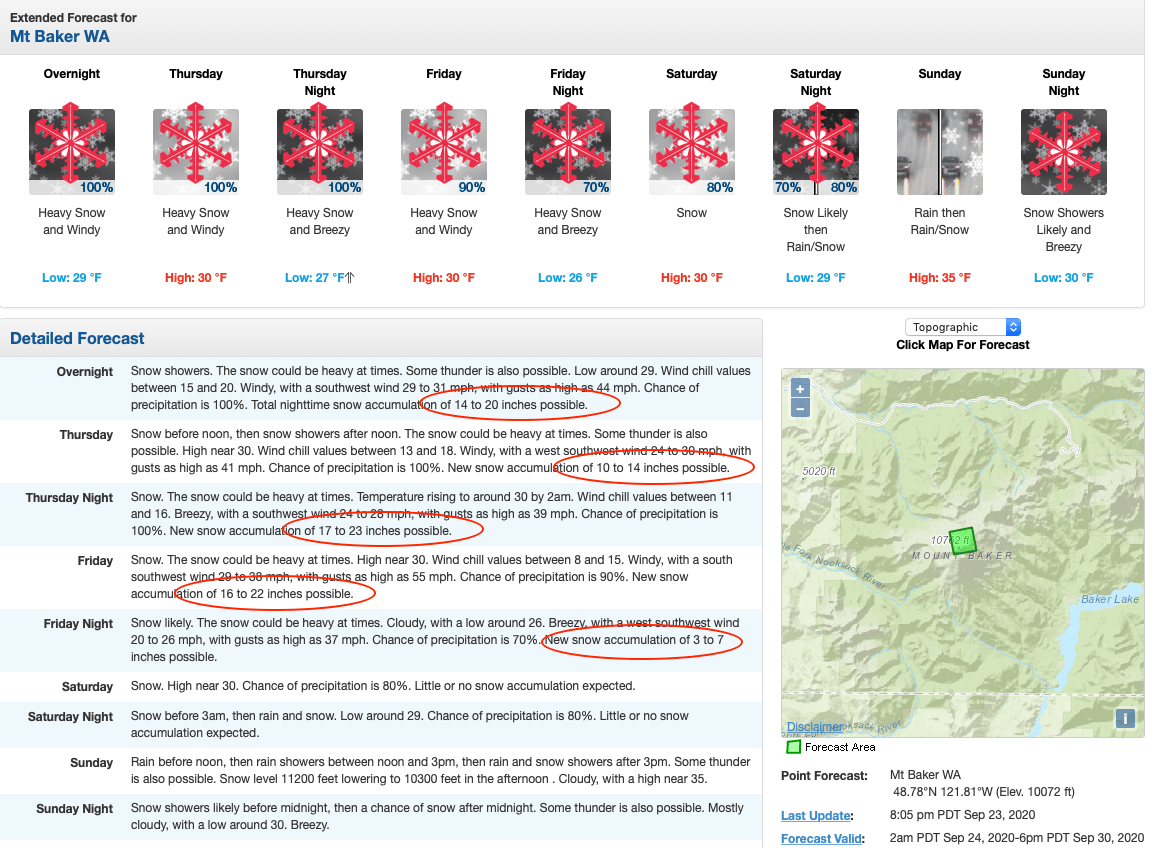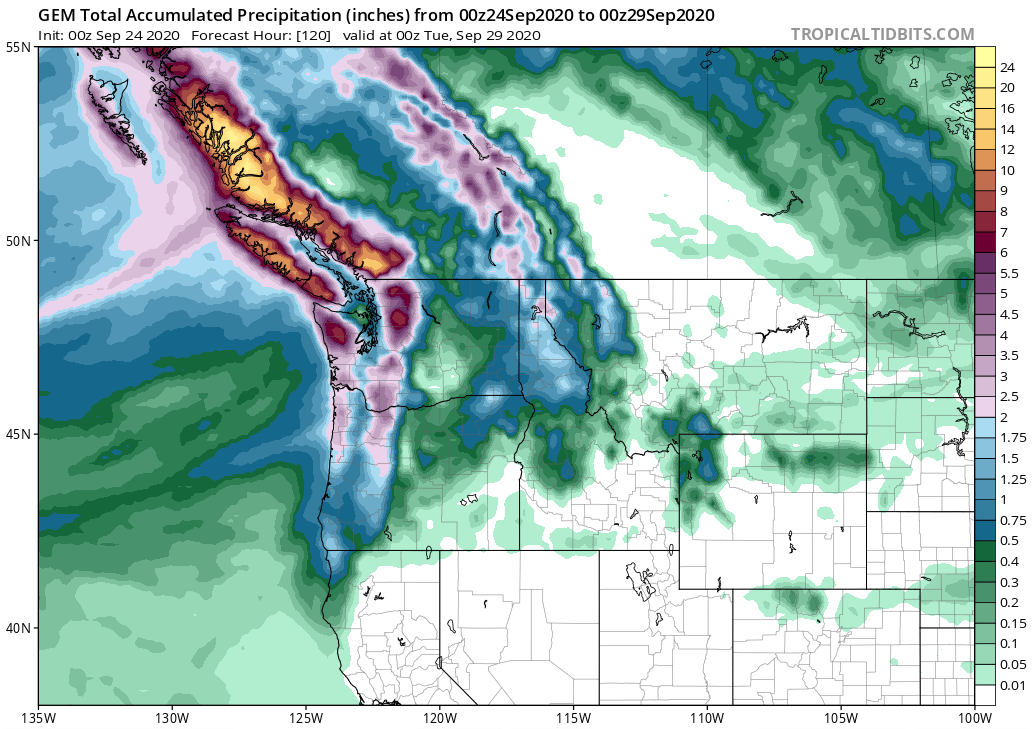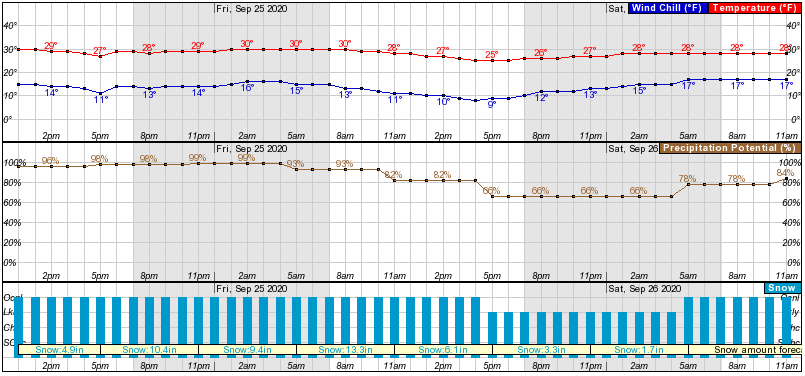
The state of Washington is about to feel the full effects of an unseasonably strong atmospheric river over the next few days, bringing with it heavy rainfall, and snowfall to mountain areas. The summit of Mount Baker (not to be confused with Mount Baker ski area), could see over 7-FEET of fresh snow.

SHORT TERM /TONIGHT THROUGH SATURDAY/... Expect continued showers across the region, with the highest amounts in the mountains as flow becomes increasing westerly. While instability looks to be somewhat modest, the overall environment may continue to support some strong showers and thunderstorms. The next frontal system approaches late Thursday and moves across the area early Friday, with another round of rain likely. Latest guidance keeps this system moving through rather quickly, but expect some breezy winds across the area Friday morning as it does so. Plenty of showers follow behind with another shortwave impulse crossing on Saturday to provide for even more rain. All together, another 2 inches of rain in the lowlands and 4-7 inches in mountains (locally higher amounts in the favored terrain) are expected Thursday through late Saturday night.

WHAT IS AN “ATMOSPHERIC RIVER”

Quick Atmospheric River (AR) Facts:
- On average, about 30-50% of annual precipitation in the West Coast States occurs in just a few AR events each year
- A strong AR transports an amount of water vapor roughly equal equivalent to 7.5-1.5 times the average flow of water at the mouth of the Mississippi River
- ARs are approximately 250-375 miles wide on average
- ARs are a primary feature in the entire global water cycle and are tied closely to both water supply and flood risks, particularly in the western US
- ARs moves with the weather and are present somewhere on Earth at any given time

Atmospheric rivers are relatively long, narrow regions in the atmosphere – like rivers in the sky – that transport most of the water vapor outside of the tropics. These columns of vapor move with the weather, carrying an amount of water vapor roughly equivalent to the average flow of water at the mouth of the Mississippi River. When the atmospheric rivers make landfall, they often release this water vapor in the form of rain or snow.
Although atmospheric rivers come in many shapes and sizes, those that contain the largest amounts of water vapor and the strongest winds can create extreme rainfall and floods, often by stalling over watersheds vulnerable to flooding. These events can disrupt travel, induce mudslides, and cause catastrophic damage to life and property. A well-known example is the “Pineapple Express,” a strong atmospheric river that is capable of bringing moisture from the tropics near Hawaii over to the U.S. West Coast.

Not all atmospheric rivers cause damage; most are weak systems that often provide beneficial rain or snow that is crucial to the water supply. Atmospheric rivers are a key feature in the global water cycle and are closely tied to both water supply and flood risks —particularly in the western United States.
While atmospheric rivers are responsible for great quantities of rain that can produce flooding, they also contribute to beneficial increases in the snowpack. A series of atmospheric rivers fueled the strong winter storms that battered the U.S. West Coast from western Washington to southern California from Dec. 10–22, 2010, producing 11 to 25 inches of rain in certain areas. These rivers also contributed to the snowpack in the Sierras, which received 75 percent of its annual snow by Dec. 22, the first full day of winter.

NOAA research (e.g., NOAA Hydrometeorological Testbed and CalWater) uses satellite, radar, aircraft, and other observations, as well as major numerical weather model improvements, to better understand atmospheric rivers and their importance to both weather and climate.
Scientific research yields important data that helps NOAA National Weather Service forecasters issue warnings for potential heavy rain and flooding in areas prone to the impacts of atmospheric rivers as many as five to seven days in advance.